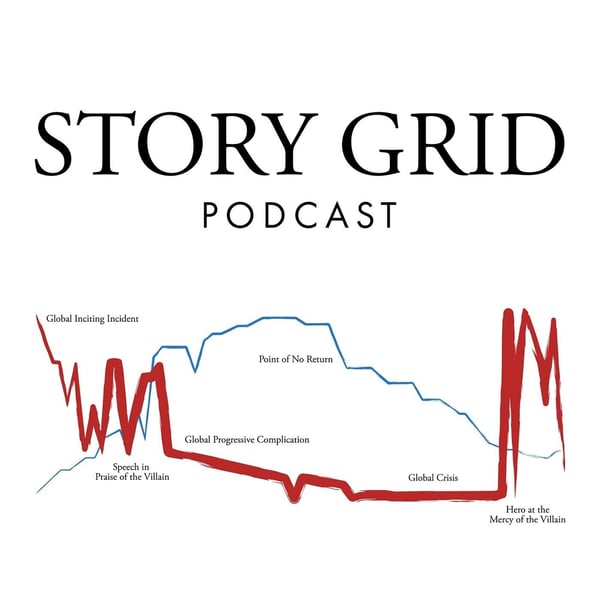Story Tropes: Building Blocks of Scenes
Story Grid Writing Podcast
Shawn Coyne
4.8 • 767 Ratings
🗓️ 16 June 2022
⏱️ 56 minutes
🧾️ Download transcript
Summary
Transcript
Click on a timestamp to play from that location
| 0:00.0 | Hello and welcome to the Storygrid podcast. My name is Tim Graal. I'm your host and I'm a struggling |
| 0:09.3 | writer trying to figure out how to tell a story that works. Joining me shortly is Sean Coyne. He's the |
| 0:15.9 | creator and founder of StoryGrid. Along with him is Danielle Kiyoski, the chief academic officer for StoryGrid |
| 0:23.1 | University and Leslie Watts, the editor-in-chief of Story Grid Publishing. In this episode, we dive |
| 0:30.4 | into the tropes for Ed McBain's story eyewitness. So we've been working through this short |
| 0:37.3 | story, looking at it from lots of different |
| 0:40.0 | angles. Last three weeks, we started looking at the beats, and now we're diving into the tropes. |
| 0:46.3 | And the tropes is this really helpful level of analysis that's kind of not too deep, but not |
| 0:51.9 | too macro. It's kind of at this perfect level that will start enabling me to actually write my own |
| 0:58.0 | scene. |
| 0:58.7 | So it's a really great episode. |
| 1:00.4 | We dive into what the first trope is, go through everything on that, and then we start |
| 1:06.0 | talking about next step. |
| 1:07.6 | So I think you're really going to enjoy it. |
| 1:09.2 | So let's jump in and get started. |
| 1:11.6 | Now that we've looked at beats and gone through all of the beats of eyewitness, broken them out |
| 1:16.7 | into input, output, and then the type of beat it is, and whether it's enlivening or depleting, |
| 1:22.6 | we're going to take a look at how to actually use this information to iterate our own version of this |
| 1:30.3 | masterwork pattern scene. So Tim's going to be doing that in the coming weeks. And to do that, |
| 1:35.4 | we want to take a step back from beats because while the beat information is extremely valuable, |
| 1:41.1 | it doesn't really give us a way to get words on the page. It's just too much to think about |
| 1:45.9 | for a writer who's trying to approach a blank page and turn that into a story of their own. So what we want |
... |
Please login to see the full transcript.
Disclaimer: The podcast and artwork embedded on this page are from Shawn Coyne, and are the property of its owner and not affiliated with or endorsed by Tapesearch.
Generated transcripts are the property of Shawn Coyne and are distributed freely under the Fair Use doctrine. Transcripts generated by Tapesearch are not guaranteed to be accurate.
Copyright © Tapesearch 2025.

